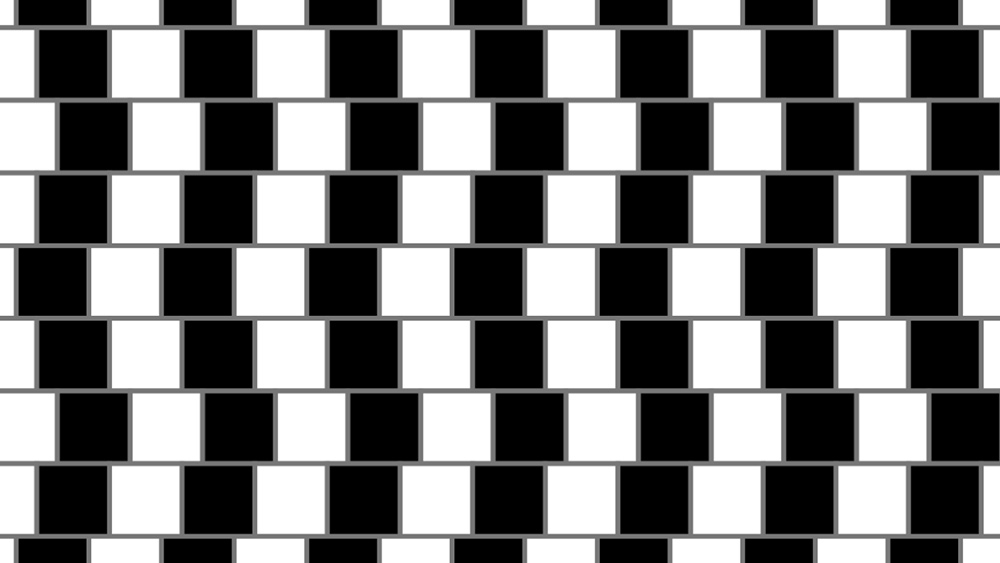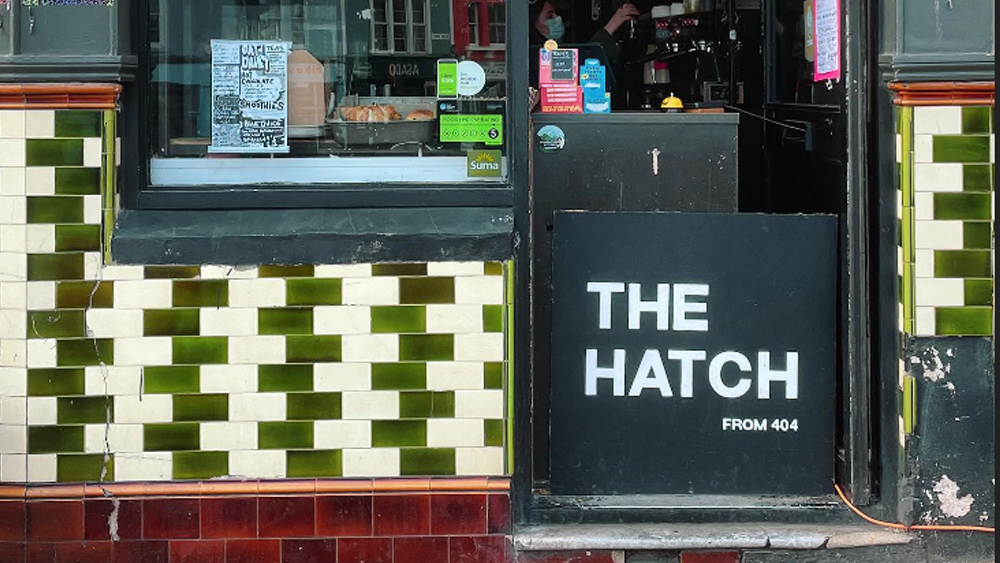We've seen a lot of optical illusions here at Creative Bloq. Most of them are created intentionally, whether to demonstrate a curious anomaly in human perception or just to have fun messing with our brains. But sometimes an optical illusion appears entirely by accident, which is what happened with this cafe, the birthplace of an illusion that's been studied by academics and is now getting attention on TikTok and Instagram.
The black and white tiles on the outside of the cafe look like they've been cut in an unusual wedge-shaped form, creating diagonal lines. But they've not. The lines are perfectly straight – we promise (like being confused like this? Then see our selection of must-see optical illusions).

Cafe 404 (Not Found) on a corner in Perry Road, Bristol, UK, not so far from our own offices, has become a place of pilgrimage for optical illusion fans as the birthplace of the 'cafe wall illusion' – a phenomenon that's been studied the world over and even has its own Wikipedia page. It was first noted by Richard Gregory, then professor of neurology at Bristol University, back in 1979 (when we assume the cafe had a less hipster name).
Now honoured with a blue heritage plaque on the wall outside the cafe, Gregory saw that horizontal rows of alternating dark and light tiles create an illusion of tapering when the tiles are out of line vertically. This happens when the lines between the tiles are an intermediate colour, such as grey (if you're doing up your kitchen and want to avoid getting dizzy every time you're cooking, try using white grout to avoid the effect).

Why does this happen? Apparently, different types of neurons react to the perception of dark and light colours, and as a result, the placement of the dark and light tiles causes parts of the grout lines to be dimmed or brightened in our retinas. When there's a brightness contrast across the grout line, a small asymmetry occurs, causing half of the dark and light tiles to move towards each other creating a wedge shape. The brain then interprets the grout line as being sloped.
The café wall illusion has been used by neuropsychologists to study how the brain processes visual information, but it's also been used by artists and graphic designers to intentionally create arresting visual effects (see the recent work of digital creator @atomiclabrador below)
A post shared by Mullin (Ray/Mike) (@atomiclabrador)
A photo posted by on
Neat, huh? If you fancy incorporating inspiration from the cafe wall illusion into your own work, make sure you're sorted out with the software you need – you can see the best current prices on Adobe's Creative Cloud packages below. And if you're after more optical illusions for inspiration, check out our pick of the best optical illusions of 2022 so far.
Get the Creative Bloq Newsletter
Daily design news, reviews, how-tos and more, as picked by the editors.
Read more:
- Make your own optical illusions with this fun online tool
- This hypnotic orange optical illusion will mess with your mind
- These animal optical illusions are still melting our minds

Thank you for reading 5 articles this month* Join now for unlimited access
Enjoy your first month for just £1 / $1 / €1
*Read 5 free articles per month without a subscription

Join now for unlimited access
Try first month for just £1 / $1 / €1

Joe is a regular freelance journalist and editor at Creative Bloq. He writes news, features and buying guides and keeps track of the best equipment and software for creatives, from video editing programs to monitors and accessories. A veteran news writer and photographer, he now works as a project manager at the London and Buenos Aires-based design, production and branding agency Hermana Creatives. There he manages a team of designers, photographers and video editors who specialise in producing visual content and design assets for the hospitality sector. He also dances Argentine tango.
